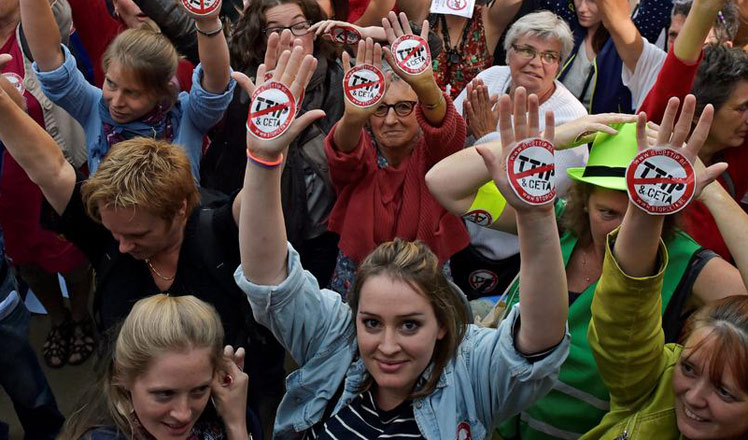The tongs that once ruled NY's Chinatown
Updated: 2016-09-21 08:00
By William Hennelly(China Daily)
|
||||||||
Before there were the Five Families of New York, there were the tongs.
The On Leong Tong and the Hip Sing Tong waged a bloody battle for control of Manhattan's Chinatown over a span of 25 years, starting around 1900. Many of the future gangsters began arriving in New York in the late 1800s, after public jobs were closed to them in San Francisco.
The story of the Tongs' heyday in New York is vividly recreated in Tong Wars: The Untold Story of Vice, Money, and Murder in New York's Chinatown by Scott D. Seligman. The author, fluent in Mandarin, is a historian and retired corporate executive with degrees from Princeton and Harvard.
In his research, Seligman sifted through old newspapers and books but often ran up against exaggerated accounts or stereotypical portrayals of the Chinese by the reporters of the day.

"Chinatowns have long suffered from tabloid-style coverage that portrays them as dangerous places run by inscrutable, all-powerful villains, their streets washed in the blood of the victims of the evil tongs," Seligman writes in the book's introduction.
"But the Fu Manchu stereotype belies the reality that most of the restaurateurs, laundrymen, cooks, grocers, cigar makers, street peddlers and other Chinese in New York at the turn of the century were decent, law-abiding people. ..."
The Hip Sings were led by the colorful Young Mock Duck, who if he were around today could pass for a pop singer.
Guangzhou-born Tom Lee, sent out east from San Francisco, headed up the On Leong Tong.
Their weapons of choice included hatchets and six-shooters, and when it came to style, they favored fedoras and pinstripe suits, not unlike their Italian and Irish contemporaries. They ruthlessly controlled the gambling parlors, brothels and opium dens of Chinatown.
And it was from these mean streets, in particular one street - winding, narrow Doyers Street - that the term "hatchet man" was coined, as axes flew unseen by unwitting victims.
"The street is angled in such a way that when you're on one end of the street, you can't see the other end of the street, which [made] it easy to ambush victims and to escape," Beatrice Chen, public programs director at the Museum of Chinese in America in New York, told China Daily in 2014.
It was on that very street on Aug 6, 1905, when the violence climaxed. A crew of Hip Sing gangsters stormed into the Chinese Theater during a performance of The King's Daughter and let loose a fusillade of 100 bullets, killing four members of On Leong Tong and two civilians.
Newspapers took note of the massacre and ramped up coverage about New York's crime wave. The Chinese consul general called on the New York district attorney for help in stopping the bloodshed.
In 1925, after years of intermittent bloodshed and the gruesome slayings of some non-Chinese, the city asked the US government to crack down on Chinese immigrants.
"No other immigrant group had ever been targeted the way the authorities were going after the Chinese," the author states. "The government was acting as if the only way to bring peace to Chinatown was to get rid of its Chinese, through whatever means necessary."
Walking the narrow streets of Chinatown, one can imagine what it must have been like in a Victorian era of violence.
Contact the writer at williamhennelly@chinadaily.com.cn
(China Daily 09/21/2016 page2)
- US fighter jet crashes off coast of Okinawa, Japan: DM
- State of emergency declared in US city Charlotte amid violent protests
- Clinton to highlight foreign policy experience to woo voters
- UN chief calls for support for political solution to Syrian conflict
- Brazil to begin Zika vaccine trials in humans
- Greek govt vows to improve refugee situation on island after fire

 8 things you may not know about Autumn Equinox
8 things you may not know about Autumn Equinox
 Italian sets new record with Ferrari on 'miracle road'
Italian sets new record with Ferrari on 'miracle road'
 Students compete for flight attendant jobs in Sichuan
Students compete for flight attendant jobs in Sichuan
 1st Sushi restaurant opens in DPRK
1st Sushi restaurant opens in DPRK
 Top 14 Chinese women in Fortune's ranking
Top 14 Chinese women in Fortune's ranking
 Hangzhou airport offers beds to tired travelers
Hangzhou airport offers beds to tired travelers
 Protesters march against EU trade deals with US
Protesters march against EU trade deals with US
 In photos: Chinese harvest in full swing
In photos: Chinese harvest in full swing
Most Viewed
Editor's Picks

|

|

|

|

|

|
Today's Top News
Trump outlines anti-terror plan, proposing extreme vetting for immigrants
Phelps puts spotlight on cupping
US launches airstrikes against IS targets in Libya's Sirte
Ministry slams US-Korean THAAD deployment
Two police officers shot at protest in Dallas
Abe's blame game reveals his policies failing to get results
Ending wildlife trafficking must be policy priority in Asia
Effects of supply-side reform take time to be seen
US Weekly

|

|







